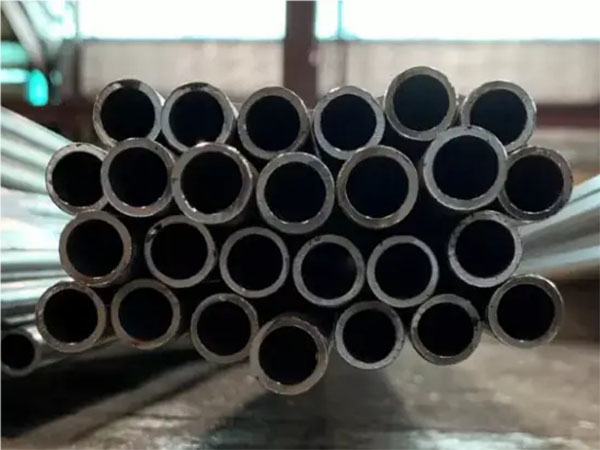Carbon steel pipes, also known as CS pipes, are made from steel ingots or solid round bars. They have high strength and are widely used in various industries. Carbon steel pipes can withstand high temperatures and pressures, making them highly suitable for transporting gases or liquids. As the carbon content inside the steel pipes increases, their performance will also undergo significant changes. According to the difference in carbon content, carbon steel pipes can be classified into low-carbon steel pipes, medium-carbon steel pipes and high-carbon steel pipes.
What is high-carbon steel pipe?
High carbon steel pipes are steel pipes made from carbon steel with a carbon content of approximately 0.60% to 1.00% as the base material. It is processed and formed through techniques such as rolling, cold drawing or hot extrusion. An increase in carbon content can significantly enhance the hardness and tensile strength of steel, but it will reduce its plasticity and toughness, and the performance needs to be optimized through heat treatment (such as quenching or tempering).

Performance characteristics
High strength and high hardness: After appropriate quenching and tempering or cold drawing treatment, the tensile strength of high carbon steel pipes can exceed 700 MPa, and the hardness can reach above HRC 50, meeting the requirements of high strength and wear resistance.
Wear resistance: The carbide phase formed by high carbon content enhances the surface wear resistance, making it suitable for high-load and frequent wear conditions.
Welding and forming performance: Due to the high carbon content, cracks are prone to occur during welding, and preheating and post-heat treatment must be adopted. Moreover, the cold bending and stamping forming performance is relatively poor.
Common standards for high-carbon steel pipes
High-carbon steel tubes mostly appear in the form of seamless steel tubes or cold-drawn precision steel tubes. Typical international standards such as ASTM A519/ASME SA519, EN 10216 (pressure tubes), and EN 10305 (precision tubes) all list high-carbon grades with carbon content close to or exceeding 0.48%.
ASTM A519 / ASME SA519 - Steel tubes for seamless machinery
Coverage: Seamless tubes of round, square and rectangular shapes with an outer diameter of ≤12 3/4 "(325 mm), which can be manufactured by cold drawing or hot rolling.
High carbon level:
Grade 1050 (C 0.48-0.55%, Mn 0.60-0.90%) : High carbon grade, suitable for springs and shape memory devices
Grade 1045 (C 0.43-0.50%, Mn 0.60-0.90%) : Medium to high carbon, taking into account both strength and toughness
Grade 1541 (C 0.36-0.44%, Mn 1.35-1.65%) : Medium carbon to high grade, used for wear-resistant components
Mechanical properties: After quenching and tempering, the tensile strength of each grade can reach over 500-700 MPa, and the hardness is within the range of HRC 40-55.
Comparison between high-carbon steel pipes and low-carbon steel pipes
Tensile strength: High carbon steel pipe > 700 MPa; Low-carbon steel pipes ≈300-450 MPa.
Hardness: High carbon steel pipes can reach above HRC 50. Low-carbon steel pipes are usually in the range of HB 120-180.
Plasticity and toughness: The elongation after fracture of low-carbon steel pipes is ≥20%. High-carbon steel pipes are usually less than 10%.
Weldability: Low-carbon steel pipes are easy to weld and do not require preheating. The welding of high-carbon steel pipes requires preheating and post-heating, and the weld seams are prone to cracking.
Formability: Low-carbon steel pipes have excellent cold bending and stamping performance. High carbon steel pipes have obvious work hardening and are difficult to be cold-formed.
Wear resistance and fatigue resistance: High-carbon steel pipes are more suitable for severe wear or fatigue loads. Low-carbon steel pipes have relatively low wear resistance and fatigue performance.
Cost: The raw material and processing cost of low-carbon steel pipes is relatively low. High-carbon steel pipes have a relatively high cost due to their heat treatment and difficulty in processing.
Selection suggestions
If the pipes or parts need to withstand high loads, be wear-resistant or fatigue-resistant, and have low requirements for welding and forming, high-carbon steel pipes can be given priority.
If good weldability, plasticity and cost-effectiveness are pursued, and the working conditions are low pressure and normal temperature, low-carbon steel pipes can be preferred.
For comprehensive performance requirements, medium carbon steel pipes can be considered or performance balance can be achieved through surface treatment/composite processes.
